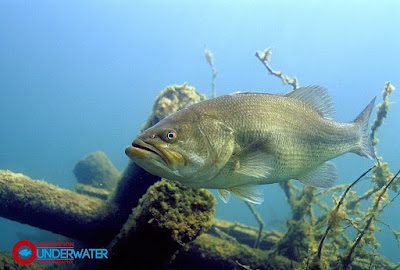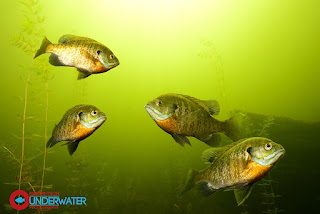
The following article appeared in the Ludington Daily News on 7/19/2022.
Ludington a snorkeling hotspot? Someday, group hopes
• By JUSTIN COOPER Daily News Staff Writer
Could these waters one day be dotted with snorkelers? A small but international group aims to bring freshwater snorkeling into the mainstream, with a particular focus on the Ludington area. One member, Martin Ruiz, described snorkeling the Big Sable River, as "the most wonderful experience that you can have."
The Ludington area has no shortage of outdoor activities to engage in. But someday, snorkeling could make its way onto that list.
A small but global group is imagining the city as an international destination for freshwater snorkeling, which they see as an untapped opportunity in outdoor recreation.
It’s all in the very early stages, and some of those involved aren’t even sure if it will involve a formal organization, a physical location or simply a website.
But at the heart of it is a belief that peeking under the fresh waters of the world is an overlooked but rich way of connecting with nature.
“Anyone who’s ever been on vacation to Florida or Hawaii … they all (snorkel) on vacation, and they all have a good time,” said freshwater photographer Eric Engbretson.
“I think people just don’t realize that we have these opportunities right here in our local lakes. … We’d just like to see it become more mainstream.”
Engbretson is part of the snorkeling enthusiast group trying to push its hobby — and Ludington’s opportunities for it — into the public eye.
Their plan could tack one more outdoor sport to the long list of them the Ludington area is known for.
But for them, it’s also a way of honoring a fellow freshwater explorer, whose favorite spot was right here in Ludington State Park.
‘The best place in the entire world’
The glue binding the group together is their admiration for Nancy Washburne, a Michigan woman whose underwater films attracted an online community of like-minded snorkelers before her death in January this year.
“She was so involved” in showing people “the incredible treasure that they have just below the surface of all these lakes and rivers all over the world,” said her husband, Martin Ruiz.
In her 60s, Washburne spent three years snorkeling nearly 500 of Michigan’s inland lakes, traveling solo in what Ruiz called “a clunker.”
Along the way, the former travel agent discovered Ludington was “the No. 1 location for snorkeling in Michigan, without any doubts — and No. 1 by far,” according to Ruiz.
“When she found the (Big) Sable River for the first time … she called me that night, and she said, you are not going to believe this. I just found the best place in the entire world,” Ruiz said.
He said the two of them returned to snorkel the river, which drains Hamlin Lake into Lake Michigan, for 15 consecutive summers.
With shallow water, no boat traffic and “hundreds” of colorful fish schooling by the riverbanks, he said it’s “the most wonderful experience that you can have.”
“It is nature at its best, and it’s always full of surprises,” he said, adding that “it’s very easy” and “free, basically.”
It’s in honor of Washburne and her favorite snorkeling spot that her husband and followers have zeroed in on Ludington as the focal point of their efforts to promote the sport.
Once the group has its ideas firmed up, Ruiz hopes to get state agencies involved in advancing Michigan, and Ludington in particular, as the “headquarters for the global alliance of freshwater discovery.”
The whole point is “to create an ecotourism industry,” he said, adding that just as Michigan draws snowmobilers in the wintertime, the Great Lakes could be a regional magnet for summertime snorkeling.
“That represents millions of dollars when you start getting this at the level it should be,” he said.
‘Oh, it’s so cool’
Mary Larson, a “big” Washburne fan from Indiana, said she started out as a hiker who “didn’t even think to look underwater.”
But she found inspiration in Washburne’s videos, and today, she is driven into freshwater by “a curiousness. I want to see what I can find, and once you actually do see the fish — oh, it’s so cool.”
For her, snorkeling has “taken over” hiking, and she regularly shares on Facebook what she sees under the waves.
She thinks it could do the same for anyone who “has that love for nature.”
“If you love hiking and seeing what kind of birds you can see — what kind of deer, animals, turkeys, bugs — if you like that, then you’re probably going to love the fish, too,” Larson said.
As for why freshwater snorkeling isn’t already big, “people don’t really understand what freshwater is all about,” said Mark Barrow, a Washburne fan in the United Kingdom who has been filming underwater for more than 30 years.
“They’re unsure of the species that live in (freshwater), and they tend to look at it as unimportant, even though they do rely on it,” he said.
It’s also partially because “the oceans always had Jacques Cousteau as an ambassador, and freshwater just doesn’t seem to have anyone,” he said — except, for some, Washburne.
Engbretson, who lives in Wisconsin, said freshwater bodies might fly under the radar because they’re “so close, and we drive by them everyday, (so) we just don’t think of them as being a destination” for snorkeling.
“And, to be fair, a lot of them are Coca Cola-colored, or chocolate milk,” he said.
But he noted Michigan is “a special place for clear lakes." And those who look into their depths may find more than just fish and seaweed.
In her “Snorkeling Guide to Michigan Inland Lakes,” Washburne described snorkeling as “a great spiritual experience.”
“Within seconds of parking the car and entering the lake, I can literally feel the tension oozing out through my fingertips,” she wrote.
“One can come out of the water in a state of spiritual and mental healing.”




















